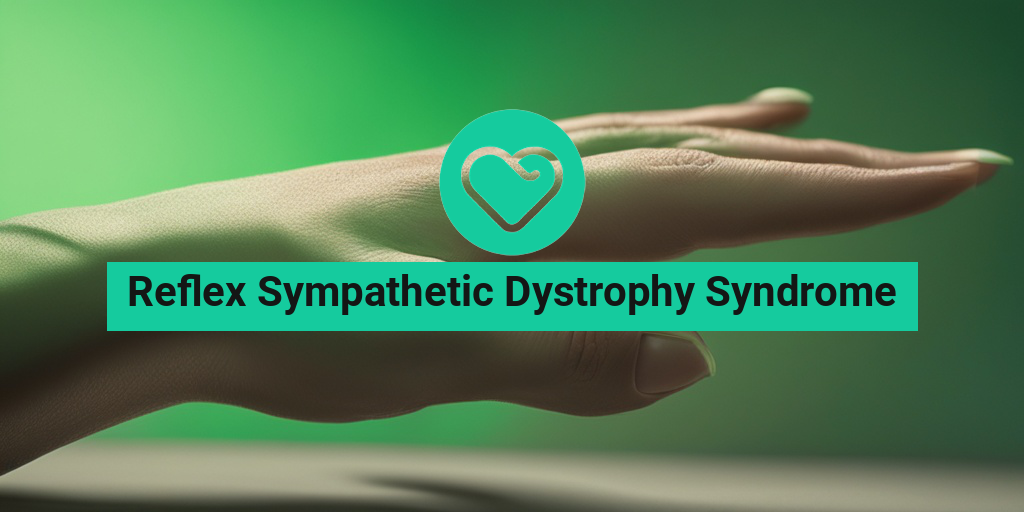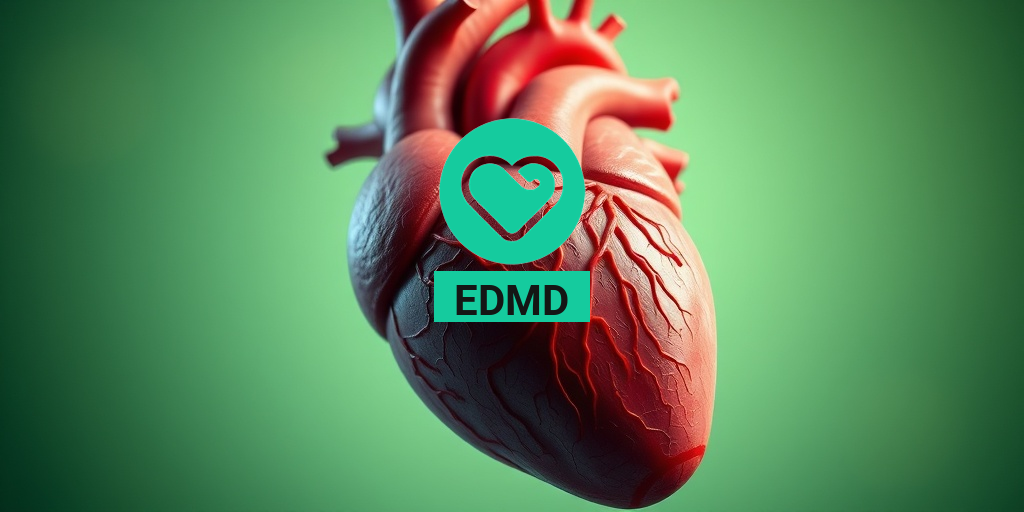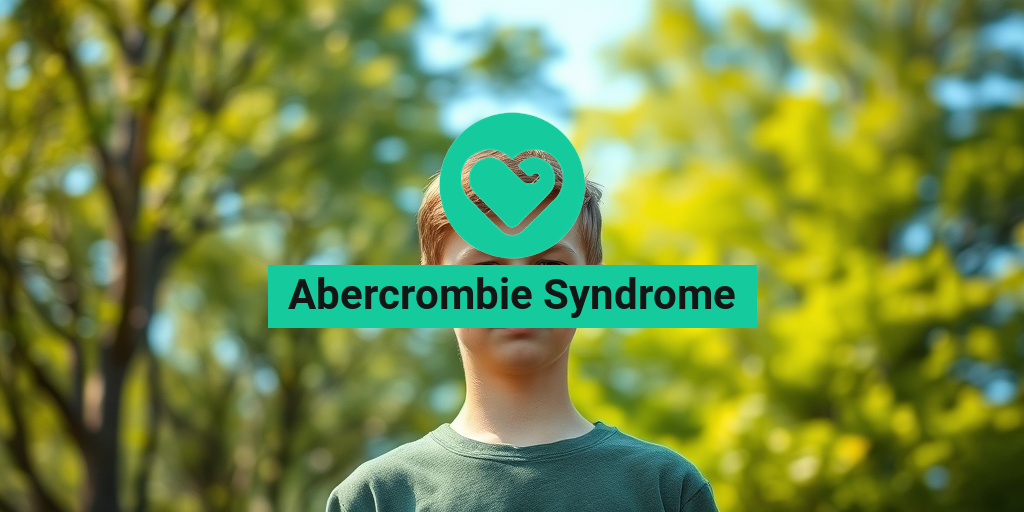“`html
What Is Reflex Sympathetic Dystrophy?
Reflex Sympathetic Dystrophy Syndrome (RSD), also known as Complex Regional Pain Syndrome (CRPS), is a chronic pain condition that typically affects a limb after an injury or trauma. This syndrome is characterized by severe pain, swelling, and changes in the skin. The exact cause of RSD is not fully understood, but it is believed to involve an abnormal response of the sympathetic nervous system, which regulates involuntary bodily functions.
RSD can develop after various types of injuries, including fractures, sprains, or even surgical procedures. The pain experienced is often disproportionate to the initial injury, leading to significant distress and impairment in daily activities. Understanding RSD is crucial for both patients and healthcare providers, as early diagnosis and intervention can significantly improve outcomes.
Understanding the Mechanism
The underlying mechanism of Reflex Sympathetic Dystrophy involves a complex interplay between the nervous system and the immune response. When an injury occurs, the body typically initiates a healing process. However, in RSD, this process goes awry, leading to persistent pain and other symptoms. The sympathetic nervous system becomes overactive, causing blood vessels to constrict and leading to reduced blood flow to the affected area.
Diagnosis of RSD
Diagnosing Reflex Sympathetic Dystrophy can be challenging due to the variability of symptoms and the lack of definitive tests. Healthcare providers often rely on a combination of patient history, physical examinations, and diagnostic imaging to assess the condition. The ICD-10 code for RSD is G90.5, which is essential for insurance and treatment purposes.
RSD Symptoms
The symptoms of Reflex Sympathetic Dystrophy can vary widely among individuals, but they typically include:
- Chronic Pain: The most prominent symptom, often described as burning, aching, or throbbing pain.
- Swelling: The affected limb may become swollen and feel heavy.
- Changes in Skin Color and Temperature: The skin may appear pale, red, or blotchy and can feel warmer or cooler than the surrounding areas.
- Increased Sensitivity: Even light touch can provoke intense pain, a condition known as allodynia.
- Stiffness and Limited Mobility: Joint stiffness and reduced range of motion can occur, making movement difficult.
- Hair and Nail Changes: There may be changes in hair growth patterns or nail growth on the affected limb.
Emotional and Psychological Impact
Living with Reflex Sympathetic Dystrophy can take a toll on mental health. Many individuals experience anxiety, depression, and frustration due to the chronic nature of the pain and the limitations it imposes on their lives. Support from healthcare providers, family, and support groups can be invaluable in managing these emotional challenges.
When to Seek Help
If you suspect you have RSD or are experiencing symptoms consistent with this syndrome, it is crucial to seek medical attention promptly. Early intervention can lead to better management of symptoms and improve quality of life. Healthcare professionals may recommend a multidisciplinary approach, including pain management specialists, physical therapists, and psychologists, to address the various aspects of the condition.
For more information and resources on Reflex Sympathetic Dystrophy Syndrome, consider visiting Yesil Health AI, where you can find evidence-based health answers tailored to your needs.
In conclusion, understanding Reflex Sympathetic Dystrophy is essential for effective management and treatment. By recognizing the symptoms and seeking timely help, individuals can navigate this challenging condition with greater confidence and support. 🌟
“`

“`html
RSD Causes and Risk Factors
Reflex Sympathetic Dystrophy Syndrome (RSD), also known as Complex Regional Pain Syndrome (CRPS), is a chronic pain condition that typically affects a limb after an injury or trauma. Understanding the causes and risk factors associated with RSD is crucial for early detection and management.
Causes of RSD
The exact cause of RSD is still not fully understood, but several factors have been identified that may contribute to its development:
- Injury or Trauma: Most cases of RSD begin after an injury, such as a fracture, sprain, or surgery. The pain experienced is often disproportionate to the severity of the injury.
- Nerve Damage: Damage to the nerves in the affected area can trigger RSD. This can occur from direct injury or as a result of surgery.
- Immune Response: Some researchers believe that RSD may be linked to an abnormal immune response, where the body’s immune system reacts excessively to injury.
- Psychological Factors: Stress and anxiety can exacerbate symptoms of RSD. Psychological factors may play a role in the onset and persistence of the condition.
Risk Factors for RSD
While anyone can develop RSD, certain factors may increase the likelihood of its occurrence:
- Age: RSD can occur at any age, but it is more commonly diagnosed in individuals between the ages of 40 and 60.
- Gender: Women are more likely to develop RSD than men, with some studies suggesting a ratio of 3:1.
- Previous Injuries: Individuals with a history of injuries or surgeries are at a higher risk of developing RSD.
- Genetic Predisposition: There may be a genetic component that makes some individuals more susceptible to RSD.
Recognizing these causes and risk factors can help in understanding the condition better and may lead to more effective treatment options. If you or someone you know is experiencing symptoms of RSD, it is essential to seek medical advice promptly. 🩺
RSD Diagnosis
Diagnosing Reflex Sympathetic Dystrophy Syndrome can be challenging due to the variability of symptoms and the lack of definitive tests. However, a thorough evaluation by a healthcare professional can lead to an accurate diagnosis.
Clinical Evaluation
The diagnosis of RSD typically begins with a comprehensive clinical evaluation, which includes:
- Medical History: The doctor will review the patient’s medical history, including any previous injuries, surgeries, or conditions that may contribute to the symptoms.
- Symptom Assessment: Patients are asked to describe their symptoms, including the nature of the pain, any changes in skin color or temperature, and swelling in the affected area.
Physical Examination
A physical examination is crucial in diagnosing RSD. The healthcare provider will:
- Assess Pain Levels: The doctor may use various scales to evaluate the intensity and quality of pain.
- Check for Sensitivity: The affected area may be examined for sensitivity to touch, temperature changes, and swelling.
- Evaluate Mobility: The range of motion in the affected limb will be assessed to determine any limitations.
Diagnostic Tests
While there is no single test to confirm RSD, several diagnostic tests may be used to rule out other conditions:
- X-rays: These can help identify any fractures or bone changes associated with RSD.
- Bone Scans: A bone scan can reveal changes in bone metabolism that may indicate RSD.
- Magnetic Resonance Imaging (MRI): An MRI can provide detailed images of soft tissues and help rule out other causes of pain.
In some cases, a sympathetic nerve block may be performed, where a local anesthetic is injected to relieve pain and confirm the diagnosis. If the pain decreases significantly, it may indicate RSD. 🧠
Early diagnosis and intervention are key to managing Reflex Sympathetic Dystrophy Syndrome effectively. If you suspect you have RSD, consult with a healthcare professional for a thorough evaluation and appropriate treatment options.
“`

“`html
RSD Treatment Options
Reflex Sympathetic Dystrophy Syndrome (RSD), also known as Complex Regional Pain Syndrome (CRPS), is a chronic pain condition that can significantly impact a person’s quality of life. Understanding the various treatment options available is crucial for managing symptoms effectively. Here, we explore the most common and effective treatment options for RSD.
Medications
Medications play a vital role in managing the symptoms of RSD. Here are some commonly prescribed categories:
- Nonsteroidal Anti-Inflammatory Drugs (NSAIDs): These can help reduce pain and inflammation.
- Antidepressants: Certain antidepressants, particularly tricyclics, can help alleviate pain and improve sleep.
- Anticonvulsants: Medications like gabapentin and pregabalin are often used to treat nerve pain.
- Opioids: In severe cases, opioids may be prescribed for pain relief, though they come with risks of dependency.
- Corticosteroids: These can help reduce inflammation and pain in the affected area.
Physical Therapy
Physical therapy is a cornerstone of RSD treatment. A physical therapist can design a personalized exercise program that focuses on:
- Improving Mobility: Gentle stretching and strengthening exercises can help restore movement.
- Desensitization: Techniques to reduce sensitivity in the affected area can be beneficial.
- Functional Training: Therapists can assist in regaining the ability to perform daily activities.
Interventional Procedures
For some patients, interventional procedures may provide relief. These include:
- Nerve Blocks: Injecting anesthetic near the affected nerves can help reduce pain.
- Spinal Cord Stimulation: This involves implanting a device that sends electrical impulses to the spinal cord to alleviate pain.
- Intrathecal Drug Delivery: This method delivers medication directly to the spinal fluid, providing targeted pain relief.
Psychological Support
Living with RSD can take a toll on mental health. Psychological support is essential and may include:
- Cognitive Behavioral Therapy (CBT): This therapy helps patients manage pain and cope with the emotional aspects of chronic pain.
- Support Groups: Connecting with others who understand the challenges of RSD can provide emotional support and practical advice.
RSD Home Remedies
In addition to medical treatments, many individuals with Reflex Sympathetic Dystrophy Syndrome find relief through home remedies. While these should complement professional treatment, they can be effective in managing symptoms.
Heat and Cold Therapy
Applying heat or cold to the affected area can help alleviate pain and reduce inflammation:
- Heat Therapy: Warm baths, heating pads, or warm compresses can help relax muscles and improve blood flow.
- Cold Therapy: Ice packs can numb the area and reduce swelling, especially after physical activity.
Gentle Exercise
Engaging in gentle exercises can help maintain mobility and reduce stiffness. Consider:
- Walking: A simple walk can improve circulation and reduce pain.
- Yoga: Gentle yoga can enhance flexibility and promote relaxation.
- Pilates: Focused on core strength, Pilates can help improve posture and reduce discomfort.
Mindfulness and Relaxation Techniques
Stress can exacerbate RSD symptoms, making relaxation techniques beneficial:
- Meditation: Practicing mindfulness meditation can help reduce stress and improve pain management.
- Deep Breathing Exercises: These can promote relaxation and help manage pain levels.
- Progressive Muscle Relaxation: This technique involves tensing and relaxing different muscle groups to reduce tension.
Diet and Nutrition
Maintaining a healthy diet can support overall health and potentially reduce inflammation:
- Anti-Inflammatory Foods: Incorporate foods rich in omega-3 fatty acids, such as fish, nuts, and seeds.
- Hydration: Staying well-hydrated can help maintain optimal bodily functions.
- Avoid Processed Foods: Reducing sugar and processed foods may help decrease inflammation.
By combining medical treatments with effective home remedies, individuals with Reflex Sympathetic Dystrophy Syndrome can take proactive steps toward managing their symptoms and improving their quality of life. 🌟
“`

“`html
RSD Complications
Reflex Sympathetic Dystrophy Syndrome (RSD), also known as Complex Regional Pain Syndrome (CRPS), can lead to a variety of complications that significantly impact a person’s quality of life. Understanding these complications is crucial for patients and caregivers alike.
Physical Complications
One of the most concerning aspects of RSD is the potential for physical complications. These may include:
- Chronic Pain: The hallmark of RSD is persistent pain that can be debilitating. This pain often spreads beyond the initial injury site, affecting other areas of the body.
- Muscle Atrophy: Due to reduced mobility and chronic pain, muscles may weaken and shrink over time, leading to atrophy.
- Joint Problems: Patients may experience stiffness, swelling, and decreased range of motion in affected joints, which can lead to further complications.
- Skin Changes: RSD can cause changes in skin color, temperature, and texture, often resulting in a shiny appearance or excessive sweating.
Psychological Complications
The psychological impact of RSD is often overlooked but can be just as debilitating as the physical symptoms. Common psychological complications include:
- Depression: Chronic pain can lead to feelings of hopelessness and despair, contributing to depression.
- Anxiety: The unpredictability of RSD symptoms can cause significant anxiety, affecting daily life and social interactions.
- Post-Traumatic Stress Disorder (PTSD): Some patients may develop PTSD, especially if their RSD was triggered by a traumatic event.
Social Complications
Living with RSD can also lead to social complications. Patients may find it challenging to maintain relationships or participate in social activities due to their symptoms. This isolation can exacerbate feelings of depression and anxiety, creating a vicious cycle.
RSD Prognosis
The prognosis for individuals with Reflex Sympathetic Dystrophy Syndrome varies widely and depends on several factors, including the severity of the condition, the timeliness of treatment, and individual response to therapies.
Factors Influencing Prognosis
Several factors can influence the prognosis of RSD:
- Early Diagnosis: Early intervention and treatment can significantly improve outcomes. The sooner RSD is diagnosed and managed, the better the chances of recovery.
- Response to Treatment: Each patient responds differently to treatment modalities, including physical therapy, medications, and nerve blocks. Those who respond well to initial treatments often have a better prognosis.
- Psychological Support: Access to mental health resources can improve overall outcomes. Patients who receive psychological support alongside physical treatment tend to fare better.
Long-Term Outlook
While some individuals may experience a complete resolution of symptoms, others may face chronic pain and disability. Studies suggest that approximately 40-60% of patients may experience significant improvement, while a smaller percentage may develop long-term complications.
Management Strategies for Better Prognosis
To enhance the prognosis of RSD, a comprehensive management strategy is essential. This may include:
- Multidisciplinary Approach: Involving a team of healthcare professionals, including pain specialists, physical therapists, and psychologists, can provide holistic care.
- Physical Therapy: Engaging in tailored physical therapy can help improve mobility and reduce pain.
- Medications: A combination of pain relievers, anti-inflammatory drugs, and nerve pain medications may be prescribed to manage symptoms effectively.
- Alternative Therapies: Techniques such as acupuncture, massage therapy, and mindfulness practices can complement traditional treatments.
In conclusion, while Reflex Sympathetic Dystrophy Syndrome presents various complications and challenges, understanding the prognosis and actively engaging in management strategies can lead to improved outcomes and a better quality of life. 🌟
“`

“`html
Frequently Asked Questions about Reflex Sympathetic Dystrophy Syndrome
What is Reflex Sympathetic Dystrophy Syndrome?
Reflex Sympathetic Dystrophy Syndrome (RSD) is a chronic pain condition that typically affects a limb after an injury or surgery. It is characterized by severe pain, swelling, and changes in skin color and temperature in the affected area.
What are the common symptoms of Reflex Sympathetic Dystrophy Syndrome?
- Severe, burning pain
- Swelling and inflammation
- Changes in skin color (red, blue, or pale)
- Temperature changes in the affected limb
- Increased sensitivity to touch
- Limited range of motion
How is Reflex Sympathetic Dystrophy Syndrome diagnosed?
Diagnosis of Reflex Sympathetic Dystrophy Syndrome typically involves a thorough medical history, physical examination, and may include imaging tests such as X-rays or MRI to rule out other conditions. A sympathetic nerve block may also be performed to confirm the diagnosis.
What are the treatment options for Reflex Sympathetic Dystrophy Syndrome?
Treatment for Reflex Sympathetic Dystrophy Syndrome may include:
- Medications (pain relievers, anti-inflammatory drugs, antidepressants)
- Physical therapy to improve mobility
- Occupational therapy to assist with daily activities
- Sympathetic nerve blocks or spinal cord stimulation
- Psychological support and counseling
Is there a specific ICD-10 code for Reflex Sympathetic Dystrophy Syndrome?
Yes, the ICD-10 code for Reflex Sympathetic Dystrophy Syndrome is G90.5. This code is used for billing and insurance purposes to identify the condition.
Where can I find support for Reflex Sympathetic Dystrophy Syndrome?
Support for individuals with Reflex Sympathetic Dystrophy Syndrome can be found through various organizations, such as the Reflex Sympathetic Dystrophy Syndrome Association (RSDSA). They provide resources, support groups, and information for patients and their families.
Can Reflex Sympathetic Dystrophy Syndrome be cured?
Currently, there is no definitive cure for Reflex Sympathetic Dystrophy Syndrome, but early diagnosis and comprehensive treatment can help manage symptoms and improve quality of life.
Are there any lifestyle changes that can help manage Reflex Sympathetic Dystrophy Syndrome?
Yes, some lifestyle changes that may help include:
- Regular exercise to maintain mobility
- Stress management techniques such as meditation or yoga
- A healthy diet to support overall well-being
- Avoiding activities that exacerbate pain
What should I do if I suspect I have Reflex Sympathetic Dystrophy Syndrome?
If you suspect you have Reflex Sympathetic Dystrophy Syndrome, it is important to consult a healthcare professional for an accurate diagnosis and appropriate treatment plan. Early intervention can significantly improve outcomes.
“`




